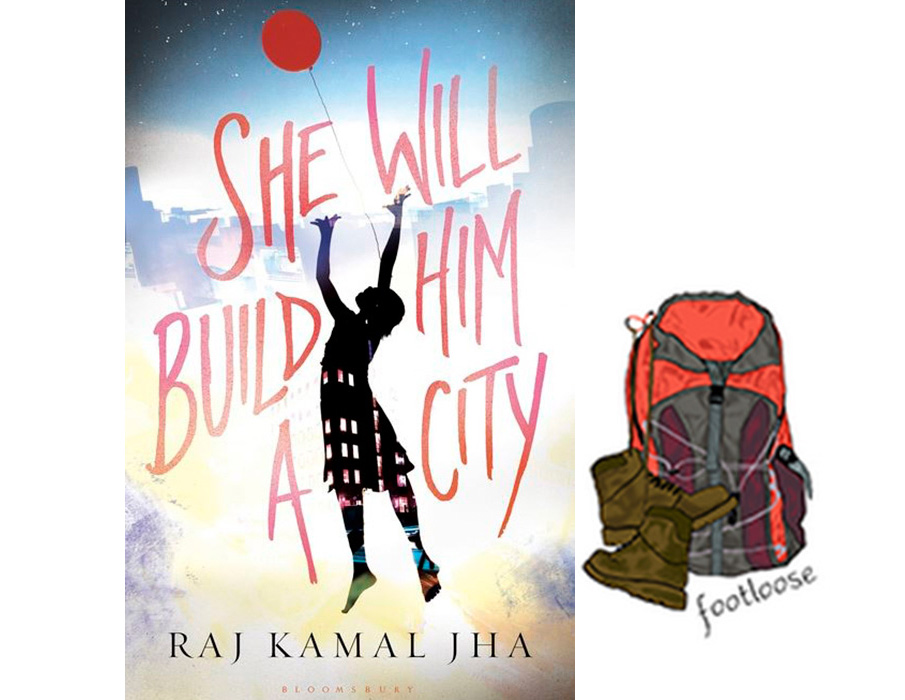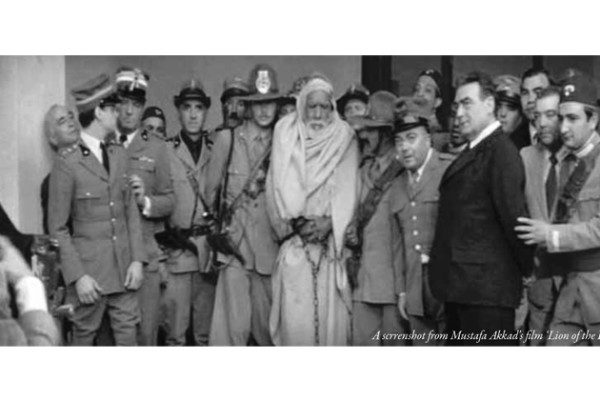Harsh Snehanshu reviews Raj Kamal Jha’s She Will Build Him A City, and asserts that despite its limitations, it heralds a new era of writing urban fiction.
The allure of Delhi’s colourful history, flourishing flamboyance and glaring vices has long attracted writers, who made the city the object—and sometimes the subject—of their grander works. William Dalrymple’s The City of Djinns delved into Delhi’s illustrious and turbulent past; Rana Dasgupta’s voluminous Capital was a contemporary sketch of the capital city’s tussle with money and no-money; Aravind Adiga’s Booker-winning The White Tiger told the quintessential rags-to-riches tale of an unscrupulous halwai; Hindi novelist Uday Prakash’s The Walls of Delhi exposed the struggles of life and survival in the capital; and Aman Sethi’s underrated narrative nonfiction A Free Man was a moving biography of a migrant daily-wage labourer living in the crammed nooks of Sadar Bazar. All these books had one thing in common: they adhered to one narrative voice and chronologically unravelled the story of its protagonist or narrator through his or her relationship with the metropolis.
Just when it seemed there wasn’t any unchartered turf left for another Delhi book, there comes along a mysterious novel that tries to create its own, breaking many of the unsaid conventions of writing urban fiction. The three protagonists of Raj Kamal Jha’s fourth novel She Will Build Him A City (Bloomsbury India, 2015) don’t have names: they are simply called Man, Woman and Child (nicknamed Orphan). Meanwhile, lovers divided by age, caste, class, authority, power—and species, too—are all enmeshed into a sprawling feast of a novel that builds from scratch the city it is set in. Their surreal stories, some bearing stark resemblances to those that Jha deals with on a daily basis as the Chief Editor of The Indian Express, are told through lyrical prose, cinematic depiction and measured indulgence. There are grotesque scenes of violence, of extreme brutality—a dog explodes into pieces when lit fire-crackers are tied to its tail and shoved into its mouth; men laugh about whose child it would be if one of them impregnate the woman they are taking turns to rape—scenes that disturb, not so much because they evoke disgust, but empathy.
The multiple narratives and myriad voices make the reading slightly tedious, and it takes a while to get the hang of the parallel stories. I returned to the book time and again, reading it in short bursts, as if it were tequila, neat. The hangover once you finish is long, as you are left to grapple with an infinitude of loose ends. True to the brow-raising forbidding subjects—pædophilia and genocide, to name a few—of his previous novels, Jha has once again waded through unchartered waters that very few contemporary writers dare venture into, for its treatment requires clever restraint; otherwise, it could end up as profane, perverted, or even pretentious.
The book, despite the slow start, grows on you as Jha ventures into a sensitive study of the tenderness of urban relationships: mother and daughter, wife and husband, old man and a young wife, master and servant, the kindness of strangers, the lasting impression of fleeting bonds. Sample these, for instance—a father bringing ice for his daughter, who has never seen ice before; a dog curling its legs around a baby to provide it warmth; a widow’s furtive affair with a student of her deceased husband, a professor. The magical characters, designated with ridiculously straightforward names, some common nouns converted into proper ones, add a surreal element to the narrative. Bhow, the dog, becomes the vehicle that takes Orphan towards his destiny; Ms Violets Rose, the old woman who lives inside a cinema theater, can sneak in and out of a movie scene at will; Mortuary Man guards the AIIMS Mortuary, slipping unauthorised people in and out for a small commission; and finally, the unstated protagonist of the novel: Balloon Girl, who sells balloons at AIIMS, whom the Man brings home at night for food, bath and sleep. Much of the book is set in the night, rather darkness, as if foreboding a grim end ahead. It’s only apt for such a novel, with a Dickensian orphan as protagonist no less, to begin with an epigraph from Oliver Twist that celebrates midnight.
Part-magic-realism, part-satire and part-fantasy, the book reads like a literary thriller. Narratives tumble from the first person to the second and the third, blurring the boundaries between the many points of view and the genres. In the second half of the book, Jha writes, paraphrasing the lecture note of one of his characters, “A time comes when a literary language, because of its highly conventionalized structure, becomes lifeless, artificial and colourless. It ceases to be intelligible to the people and then it is discarded and becomes dead. The need, then, is felt for the creation of a new language.” A need that, it seems, Jha takes upon himself to fulfil over the course of this book. The outcome is a radical style and form that attempts to pull you out of both your literary and emotional comfort zones, succeeding only partially. Not all the instances of iconoclasm seem worthy. Many characters are precipitously introduced and remain underdeveloped. Some chapters, such as that of a domestic help—a character inconsequential to the plot—reciting her daily routine to her children, seem to be written to pander to a Western audience eager to consume the quintessential ‘Poor India’ sagas. Meanwhile, the daily grind of significant characters like Taxi Driver or Balloon Girl, who have much more presence and prominence in the plot, isn’t explored. Many interesting quirks of the characters, such as Man labeling prices to each and every object that he talks about, disappear after being initially introduced. As if Jha forgot about it.
What the book does succeed in is sketching a tender portrait of New India, epitomised by Jha’s New City. It would be shortsighted to say that She Will Build Him a City is only about New Delhi. Yes, it has many elements of the capital, but like real estate, the novel transcends city limits; the corporate hotspot of New City seems to be a stand-in for Gurgaon. Through a collage of small stories, Jha tells the stories of its inhabitants: the underprivileged, trusting and vulnerable, on the one hand and the nouveau riche, vehement and indifferent, on the other. The latter takes more airtime in the narrative. Aptly so, since they are the ones that flood New City in greater numbers. They are there to acquire and accumulate, to feed and fuel their aspirations, to cut through class barriers and climb up the socio-economic ladder as fast as possible. The glorious history of their city is of little concern to them; the drama in their ‘Apartment Complex’ keeps them occupied. ‘The Mall’ siphons off half of their seven-digit salaries. Their children go to posh schools along with kids of identically upwardly mobile citizens.
In a way, the narrative apes the haphazard manner in which Gurgaon, the city within the city, erupted and developed over the last couple of decades. An apartment here, a mall there, a five star hotel here, a slum there. A pædophilic necrophile here, an abandoned widow there; an orphan riding a dog here, a gang rape there. As one goes through the novel, the reader would expect these parallel narratives to tie in into one complete story, one whole picture, but Jha doesn’t conform to such predictable temptations. He mimics real society, which celebrates the corporate ideal of individualism, where fleeting kindness is ephemeral and personal ambitions last a lifetime. Like the citizens of this New City, where rarely does anyone know the folksnext door, where two lives hardly ever overlap for mere sense of completion and closure, the countless characters of Jha’s novel remain unlinked. He ties only a few loose ends, leaving an entire platter of unforgettable dialogues (“She wears a skirt, they say, she is The English Whore”) and visceral observations (“a smell like rotting vegetables”), haunting imageries (“ice speckled with sawdust for the corpse”) and memorable alliterations (“bread and bananas”), hanging untied and unresolved. Very much like the New India, New City exists along with its oddities.
While describing a woman eloping with a man who lives in the New City, Jha writes, “[It’s the] past they are running away from and he will fill her days only with the present – and the promise of a future.” The New India is an India of binaries, of promise amidst problems, of new amidst the old, of poverty and riches, of ugliness and outrageous beauty, of violence and tenderness, of loss and acquisition, of dispassion for the past but a close association with the future. Gone are the days of postcolonial sagas; this New India, with its non-linear (read unequal and unfair) trajectory, seems to herald new ways in writing, as well as reading, about it if we are to do any justice to its chaos. Raj Kamal Jha’s She Will Build Him a City promises to be the trailblazer, the smell before the rain.


